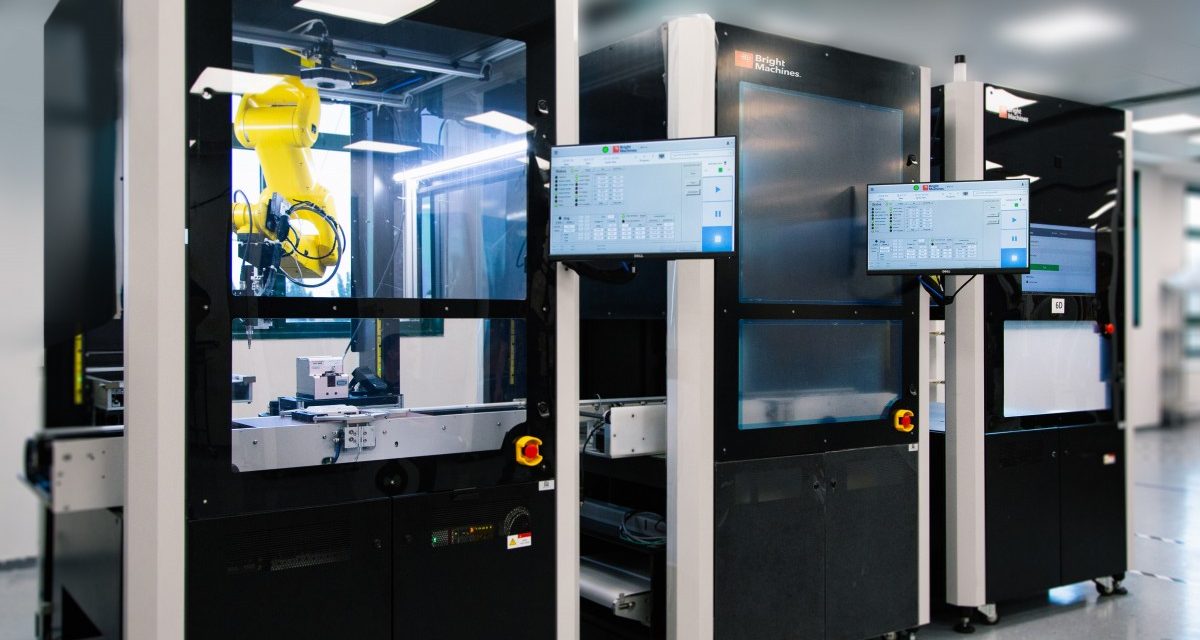EMSNOW Executive Interview Part One: Bright Machines’ CEO Amar Hanspal

Established in 2018, Bright Machines aims to provide a new model to “autonomously build the next generation of products.” Their global team consists of leading experts in applied science, software, robotics, process engineering and factory operations, with deep experience building cloud-based architecture, security and solutions. They say they are re-imagining what manufacturing will be in the future, grounded in the reality that exists on today’s factory floors. We wanted to know more about this business model and present an interview with Bright Machines’ CEO Amar Hanspal in two parts. Part Two will appear tomorrow.
 EMSNOW: Bright Machines announced the delivery of the first ‘software defined microfactory’ last month. Congratulations on that accomplishment. Please explain more behind this concept and specifically how it is different from traditional electronic manufacturing processes.
EMSNOW: Bright Machines announced the delivery of the first ‘software defined microfactory’ last month. Congratulations on that accomplishment. Please explain more behind this concept and specifically how it is different from traditional electronic manufacturing processes.
Bright Machines Microfactories are comprised of integrated hardware and software that, together, provide a modern, AI-powered approach to factory automation. The modular, multifunctional robotic systems take advantage of AI and a cloud-based architecture to deliver significantly better assembly efficiency, while getting more intelligent and automated over time.
For years, companies have been tackling automation in manufacturing by taking a hardware-centric approach – relying on big, expensive machines and robots that take months to install and configure. We take a software-first approach to automation, in which individual machines are connected to an AI-powered software layer that configures, monitors and manages machines and operations, therefore creating programmable and autonomous factories. Software-Defined Manufacturing represents the next generation of factory automation by bringing affordable, quickly deployable and more reusable solutions to an industry that has been underserved by software.
EMSNOW:Would you characterize Bright Machines as an EMS company, a software company, or a hybrid of sorts?
Bright Machines is a product company, one that brings together both intelligent software and flexible factory robots to enable touchless automation in manufacturing. This combination of software and hardware represents a fundamental shift in how the manufacturing industry has traditionally viewed automation’s potential. We are not an EMS company, we see ourselves as an enabler to EMS companies.
Factory automation implementations have been slow in the EMS industry despite a lot of investment and cooperation among the equipment vendors to offer an integrated solution. How does your approach overcome the resistance and deliver on the ROI?
In electronics manufacturing today, the front end (SMT portion) of the line is automated, but the final stages of assembly and inspection often are not. Historically, the solutions available to automate assembly and inspection have been too expensive and inflexible, so it’s been more cost effective to use human labor to perform these stages. The modular, flexible Bright Machines Microfactories solve this problem and bring a strong ROI proposal to the automation of assembly and inspection via increased quality and output. Over time, software will define every phase of the manufacturing lifecycle enabling fully programmable factories.
In addition to overcoming obstacles around cost efficiency, there’s simply less barrier to successful implementation with Bright Machines Microfactories. Microfactories can be deployed twice as fast as the deployment time required for custom automated assembly lines. This means our customers can get their products to market faster, which is extremely important in markets with high innovation, as they tend to have shorter product life cycles.
And, unlike expensive custom automated assembly lines, Bright Machines Microfactories are extremely dynamic. Bright Robotic Cells (BRCs) are modular multifunctional robotic systems that enable higher levels of equipment repurposing and lower total equipment costs, as they can be reconfigured to meet the manufacturing needs of the product being assembled. Brightware software, together with machine accessories and various end of arm tools, can transform the same set of BRCs into very different, highly-specialized assembly microfactories. They’re future-proofed with meaningful software updates enabling new features such as automated assembly inspection, predictive maintenance, AI-driven analytics and automated machine calibration.
EMSNOW:What are the equipment requirements of your Bright Robotic Cells (BRCs)? Are these standardized platforms based on common SMT equipment or can they utilize any SMT and test equipment?
The basic requirements are power, air, and problems to solve! Conveyors, tray feeders and end of arm tools are available as part of our microfactory system. We have kept material feeding and flexibility in mind. BRC’s can easily be connected into an existing SMT or assembly line, or you could leverage multiple BRC’s to create a whole new line.
EMSNOW: Will these be deployed anywhere a client has a need or will they be contained only within one of your facilities?
Microfactories can be deployed anywhere that a customer maintains a production facility. Some of our customers are also utilizing our systems in their NPI/Prototype facilities to Design for Automation out of the gate. Bright Machines is not an EMS company and does not own factories; our technology is deployed at our customers’ and partners’ facilities.










